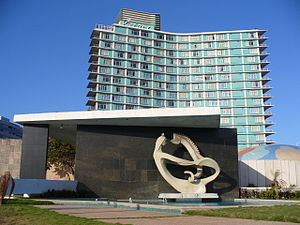The institutionalization of the World Diabetes Day was the initiative of the International Diabetes Federation (IDF) and the World Health Organization (WHO) in 1991 to respond to the concern about the growing incidence of this disease worldwide.
It gathers millions of people from more than 145 counties in order to raise awareness of children and adults with/without diabetes, health professionals, politicians and communication media about the disease.
In 2006, the United Nations Organization (UN) recognized in resolution 61/225 the World Diabetes Day as a Health Day of the United Nations.
The celebration takes place on November 14th because this is the birthday of Frederick Banting who, together with Charles Best, firstly conceived the idea that led to the discovery of insulin in 1922. Although a number of events are celebrated this day or close to that date, the main topic of the campaign is promoted throughout the whole year.
Every year the campaign is focused on a new topic related to diabetes; some of them have been diabetes and human rights, diabetes and lifestyles, diabetes costs, diabetic complications affecting heart, vision and kidneys and foot care.
Until 2007, the World Diabetes Day did not have a recognized and unified logotype, but after the campaign ¨United for Diabetes¨, the blue circle became the global symbol of diabetes. Blue represents the sky color and the United Nations flag whereas the circle is the symbol of unity in the struggle against the diabetes epidemics.
Menu
Riviera Hotel


Interesting links
Administration
World Diabetes Day
MsC. Yadia Yates Verdecia |
Otro sitio más de Promociondeeventos.sld.cu |
República de Cuba.
© 1999 - 2025,
Infomed, Centro Nacional de Información de Ciencias Médicas, Ministerio de Salud Pública.
